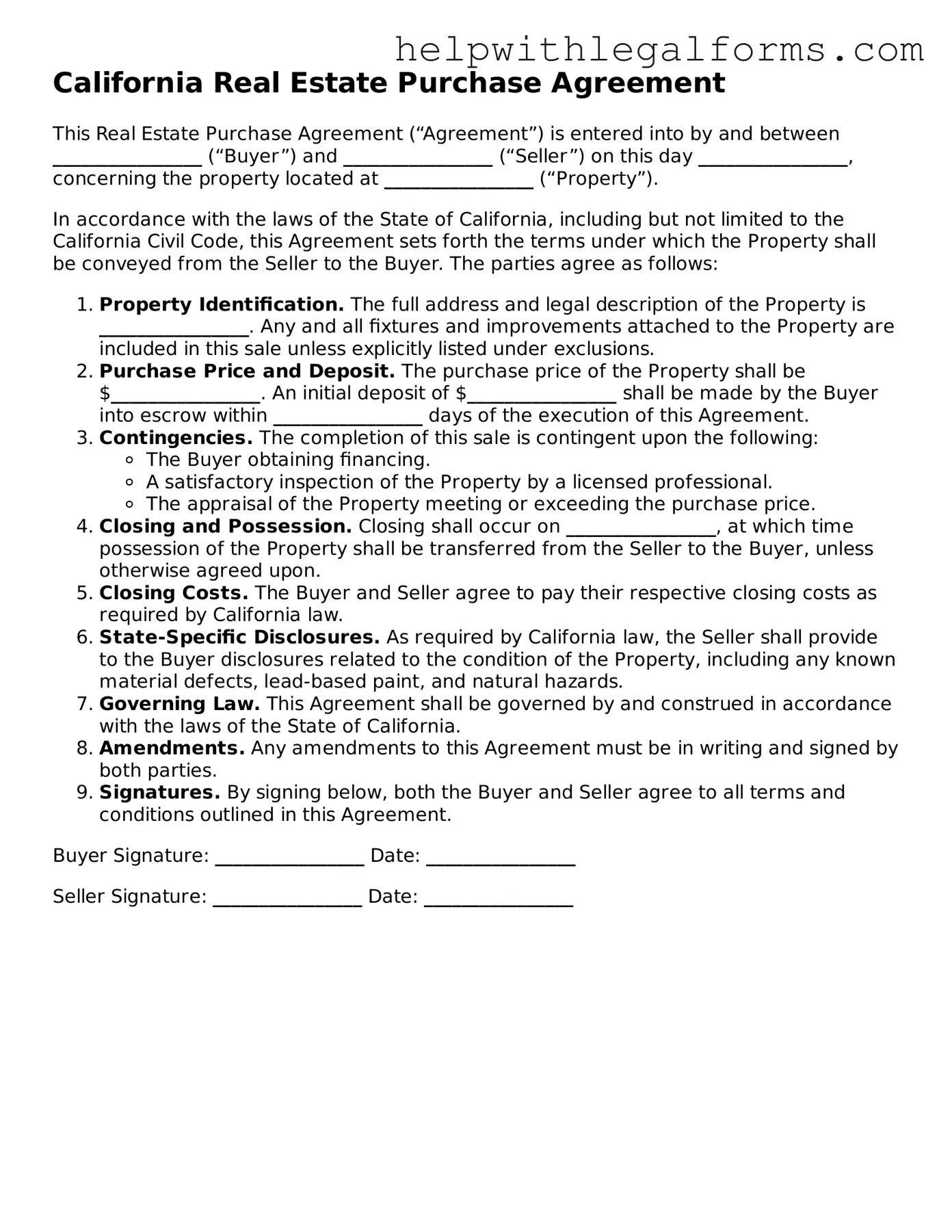What is a California Real Estate Purchase Agreement?
A California Real Estate Purchase Agreement is a legal document used to outline the terms and conditions of a transaction where someone is buying real estate in California. This comprehensive document includes details like the purchase price, escrow arrangements, disclosure requirements, and any contingencies that must be met before the sale can be finalized. It is legally binding once signed by both the buyer and the seller.
Who should use a California Real Estate Purchase Agreement?
This agreement should be used by anyone looking to buy or sell a piece of property in California. It could be residential, commercial, or any type of real estate. Both parties, the buyer and the seller, need to agree to and sign the document for the sale process to move forward. Real estate agents involved in the transaction will also use this agreement as part of the sale negotiation and completion process.
What key information is included in the agreement?
The agreement covers vital information necessary for the real estate transaction, such as the identities of the buyer and seller, a legal description of the property being sold, the purchase price, the deposit amount, financing details, closing date, conditions or contingencies that need resolving before closing, and specific disclosures related to the property. It also outlines who pays for what costs, like inspections and title insurance, and how any disputes will be resolved.
Are disclosures required in the California Real Estate Purchase Agreement?
Yes, California law requires the seller to provide specific disclosures in the real estate purchase agreement, including any known material defects that could affect the property's value or desirability. Examples include natural hazards, lead-based paint if the property was built before 1978, and any deaths on the property in the last three years. Meeting these disclosure requirements is essential for the legal transfer of property.
What are contingencies in a Real Estate Purchase Agreement?
Contingencies are conditions specified in the purchase agreement that must be met before the sale can be completed. Common contingencies include the buyer securing financing, the successful completion of a home inspection, and the property appraising at a value that supports the agreed purchase price. Both buyers and sellers must agree on how these contingencies will be resolved within specified timelines.
Can either party back out of a California Real Estate Purchase Agreement?
Yes, but conditions apply. If contingencies outlined in the agreement are not met, the buyer can usually cancel the contract without penalty. Similarly, if the buyer defaults or fails to follow through with the purchase without a valid reason, the seller might retain the deposit as a breach of contract. Therefore, understanding and adhering to the agreement's contingencies and terms is crucial for both parties.
How does the escrow process work in California?
In California, the escrow process is a critical component of the real estate transaction. An escrow company or agent acts as a neutral third party that holds the deposit and manages the exchange of documents and funds between the buyer and seller. This process ensures that the terms of the purchase agreement are met before any money and property ownership are exchanged. The escrow process begins once the buyer and seller sign the purchase agreement and ends at the close of escrow, when the sale is complete and the property officially changes hands.
